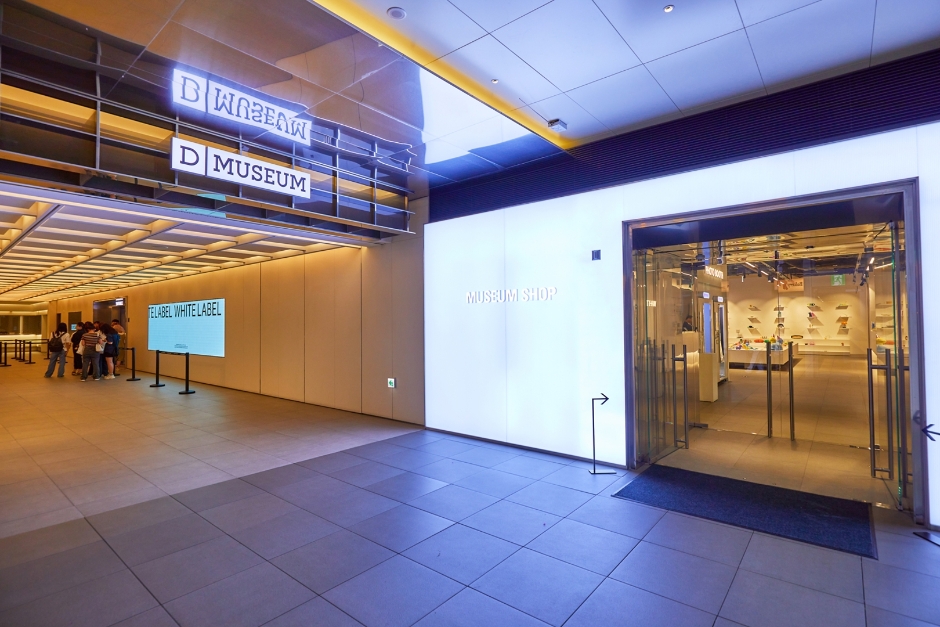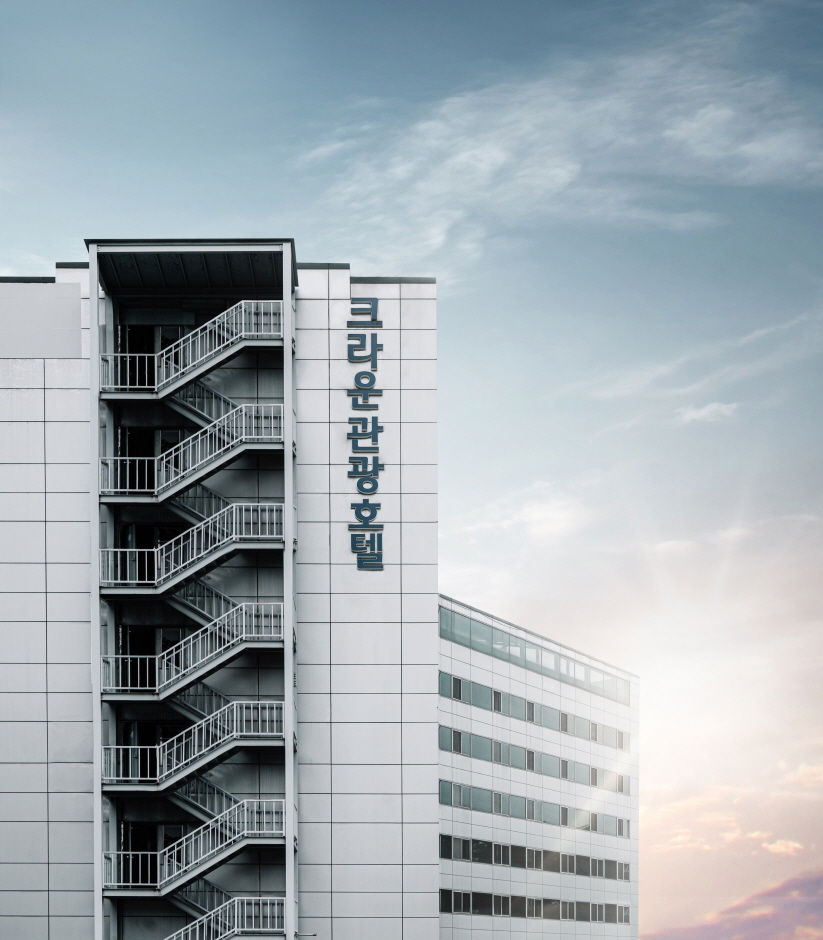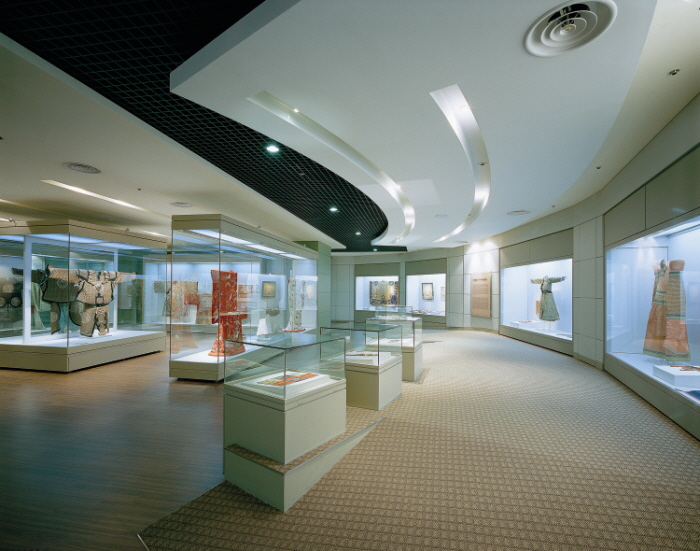Meal° (Seongsu) (밀도 성수점)
4.4Km 2023-10-23
96, Wangsimni-ro, Seongdong-gu, Seoul
Meal° (Seongsu) is a bakery located in front of Seongdong-gu Citizens' Sports Center, near Exit 1 of Seoul-forest Station (Suin–Bundang Line). Because the shop has no parking lot, visitors are advised to utilize buses, subways, and other public transportation when visiting. The shop itself is rather small, so it operates on a take-out-only basis. One can, however, opt to have the bread delivered. Signature menus include plain and rich bread, honey rusk, chocolate and honey rusk, cube custard, and strawberry jam bread. Other menus include scones, cube bread with streusel, and sandwiches. Nearby sites include Seongsu-dong Cafe Street, Seongsu Handmade Shoes Park, Seoulsup Forest, and Ttukseom Recreation Area.
Whanki Art Museum (환기미술관)
4.4Km 2024-03-04
63, Jahamun-ro 40-gil, Jongno-gu, Seoul
+82-2-391-7701
Whanki Art Museum exhibits the works of Kim Whanki (1913-1974), the pioneer of Korean abstract art. Kim was inspired by traditional features such as Korean mountains and streams, the sky, moons and clouds, the white porcelain and traditional patterns, and worked to express them in abstract forms through points, lines, and surfaces. The main collection features nearly 300 works by Kim. One can also find an art shop and a café.
D MUSEUM Seongsu (디뮤지엄 성수)
4.4Km 2023-11-06
83-21, Wangsimni-ro, Seongdong-gu, Seoul
+82-2-6233-7200
D MUSEUM greets the general public with its catchphrase, “an art museum where daily life becomes art.” In 2021, the museum relocated to the area near Seoul Forest Park, so that it could accommodate more visitors in its space. The museum not only hosts exhibitions by prominent photographers like Nick Knight (NICK KNIGHT: IMAGE, 2016) and Linda McCartney (Linda McCartney Retrospective, 2014) but also leads the efforts to promote awareness among the general public through invitational exhibitions featuring up-and-coming artists. Its relocation to Seoul Forest Park was marked by the special exhibition “Romantic Days,” which garnered much interest among the visitors as a chance to meet the works of artists born in the ‘80s and the ‘90s.
Seoul Forest (서울숲)
4.4Km 2024-10-29
273 Ttukseom-ro, Seongdong-gu, Seoul
+82-2-460-2905
Seoul Forest is a city park opened on June 18, 2005 in what was originally a water treatment facility. Consisting of four themed parks spread over approximately 595,000 ㎡ of land, Seoul Forest is an eco-friendly zone appreciated not only by the people of the city but also those visiting Seoul.
Seoul Crown Hotel (서울 크라운 관광호텔 )
4.4Km 2021-05-24
140, Noksapyeong-daero, Yongsan-gu, Seoul
+82-2-797-4111
Seoul Crown Hotel is in the main shopping district of Itaewon, an international area where a variety of restaurants, shops, and other entertainment choices are clustered. The hotel is perfect for rest, weddings or events and parties as it is equipped with all the subsidiary facilities to accommodate all the guest’s needs. Guests can also easily travel throughout the city using public transportation that is nearby.
Dongnimmun Gate (독립문)
4.4Km 2022-12-15
251, Tongil-ro, Seodaemun-gu, Seoul
Dongnimmun stands at the location originally known as Yeongeun, where envoys were once treated. When a Chinese envoy visited, the King would go out through this door to greet. In 1898, to announce the independence from Japan, Dongnimun was constructed with the fund collected by the citizens. The traces of the past still remain on Dongnimmun with two pillars in front of Dongnimmun being the remains of Yeongeunmun.
The Arc de Triomphe in France can be recalled in comparison to Dongnimmun. Dongnimmun was built using granite with a passageway x_height of 14.28 meters. On the top it is written ‘Dongnimmun’ in Korean with the national flag drawn on each side. On the inner-left side there are stone stairs leading to the attic. The national flower Mugunghwa are planted around Dongnimmun. Now it is surrounded by roads and it is eye-catching to view when passing by.
Seodaemun Prison History Museum (서대문형무소역사관)
4.4Km 2024-12-02
251 Tongil-ro, Seodaemun-gu, Seoul
Seodaemun Prison was built under the Japanese administration to imprison independence movement activists. It first opened on October 21, 1908 under the name Gyeongseong Prison. Eventually, so many activists were imprisoned that the building had to be expanded. At that time, the name changed to Seodaemun Prison on September 3, 1912. Eighty years later, the prison was turned into Seodaemun Independence Park on August 15, 1992 to commemorate the Korean patriots who were tortured in prison, giving their lives for freedom. Of the many buildings, only seven were preserved for their historical significance, among which three prison buildings and the execution site were designated as a Historic Site. In 1998, the park underwent another transformation into today's Seodaemun Prison History Hall to educate the public on the importance of Korea's independence and the sacrifices of those who fought to achieve it.
Buam-dong (부암동)
4.4Km 2024-03-15
Buam-dong, Jongno-gu, Seoul
+82-2-2148-1807
Buam-dong is a village located north of Gyeongbokgung Palace. It is designated as a development-restricted zone due to its proximity to the Cheong Wa Dae, preserving the old neighborhood's appearance. There are numerous bakeries, cafés, restaurants, and small galleries housed in renovated traditional houses, making it a delightful place for a leisurely stroll. The nearby hiking trails connected to Bugaksan Mountain offer a tranquil journey through the forest, ideal for those seeking a peaceful retreat.
Seodaemun Independence Park (서대문독립공원)
4.5Km 2022-12-15
251, Tongil-ro, Seodaemun-gu, Seoul
+82-2-3140-8305
Seodaemun Independence Park was built on the former Seoul Detention Camp. It was used to imprison thousands of Korean independence activists until the liberation from the Japanese occupation on August 15, 1945, as well as the political prisoners during the political turmoil in the 1960s. When the prison was moved to Uiwang-si, Gyeonggi-do in November 1987, the area was restored and turned into a memorial park in August 15, 1992 to honor the sacrifices of the martyrs. The park preserves seven prison buildings, an execution ground, underground women’s prison, and the March 1st Movement Monument that has been moved from Tapgol Park in Jongno.
One of the most significant monuments of the Seodaemun Independence Park is Dongnimmun Gate (Independence Gate), which has been designated a Historic Site. Nearby is Dongnipgwan (Independence Hall), originally called Mohwagwan, which was used to greet Chinese envoys during the Joseon dynasty. Today, the hall enshrines 2,327 tablets inscribed with the names of Koreans who died for the cause of national independence. Standing right next to Dongnimmun Gate are the remnants of Yeongeunmun Gate, another Historic Site. Other sights inside the park include the Patriotic Martyr Monument, Declaration of Independence Monument, and Statue of Dr. Seo Jae-pil, who was an independence activist and publisher of Korea’s first independent newspaper. The main highlight of the park is the Seodaemun Prison History Hall, a former prison building that was renovated into a history museum.
Sookmyung Women's University Chung Young Yang Embroidery Museum (숙명여자대학교 정영양자수박물관 (서울))
4.5Km 2019-11-15
100, Cheongpa-ro 47-gil, Yongsan-gu, Seoul
+82-2-710-9134
Chung Young Yang Embroidery Museum was founded in May 2004 to enhance public awareness and appreciation of embroidery art with ample facilities including exhibition hall, library, conservation center, learning center, embroidery study room, education and research rooms. The museum emphasizes on the variety of textiles and embroidery and also features collections from various Northeast Asian countries. The Chung Young Yang Embroidery Museum stresses the importance of embroidery as an evolving form of art through changes in technology, social and cultural environment. In addition, the learning center also aims to become a learning center for scholarship in embroidery and other textile arts that can be appreciated by a wide audience.





 English
English
 한국어
한국어 日本語
日本語 中文(简体)
中文(简体) Deutsch
Deutsch Français
Français Español
Español Русский
Русский